Abstract
The thesis on new Parliament House at New Delhi is aimed at understanding the relationship between architecture and democracy. It is a subject which has been explored since a long time but has not got enough light because of the limited number of buildings that share this relationship. Rarely does an Architect get an opportunity to design a building that provides a nation its pride and prosperity in the form of its democracy.
Emotions of a Democracy metaphorically strives to understand the directives of governance that shape the idea of people’s inclusion, directly or indirectly, in country’s government and literally records the expressions of people towards the idea of taking control, full or partial, of the nation they live in.
The Parliament House, The temple of democracy or the theatre of democracy, either way, it is where the nation takes shape, metaphorically as well as literally.
The architecture of the Parliament House plays a pivotal role in providing the people of the nation the inclusion they crave. It is important for the building to be people’s building at the same time monumental.
“It is the image of the nation as well as the aspiration of the people.”
The current Parliament House of India was inherited from British who built it, for and according to their governance system which was parliamentary monarchy projected with democracy. The platform to build a new Parliament House of India brings in the opportunity for a democratic approach.
Aim
As more and more countries adopt democratic government system, it becomes important to understand the real essence of democracy and its principles.
The design dissertation aims at understanding the principles of democracy in its pure form, the present form in India and explore architecture’s role in celebration of democracy.
Objective
The objective of the dissertation is to layout emotions and suggestions towards achieving better democracy in India.
The objective of the design dissertation is to approach the building of India’s Parliament with democratic architectural expression.
To build a structure that has its heritage value in future not just because of its function but also because of its architecture.
To design a Parliament House that is technologically up to date that can support it to be more democratic.
To make the building of utmost importance in the country, serve not just the nation, but also the nature, with architecture that has the most sustainable approach possible.
To design a building that is compatible with the geography and stands for perpetuity.
Design Brief
The Parliament is the group of people, the representatives, who produce the ideas, wishes, and demands of the people of the constituency they come from and thus collectively the whole country. The building that houses these emotions thus becomes one of the most important building for the country. The architecture of a Parliament House should be detailed enough to represent these emotions and make room for future emotions, because not just the present is being shaped inside it, but also the map of future will be drawn.
The current Parliament House of India was inherited from British who built it, for and according to their governance system which was parliamentary monarchy projected with democracy. The platform to build a new Parliament House of India brings in the opportunity for a democratic approach.
Concept

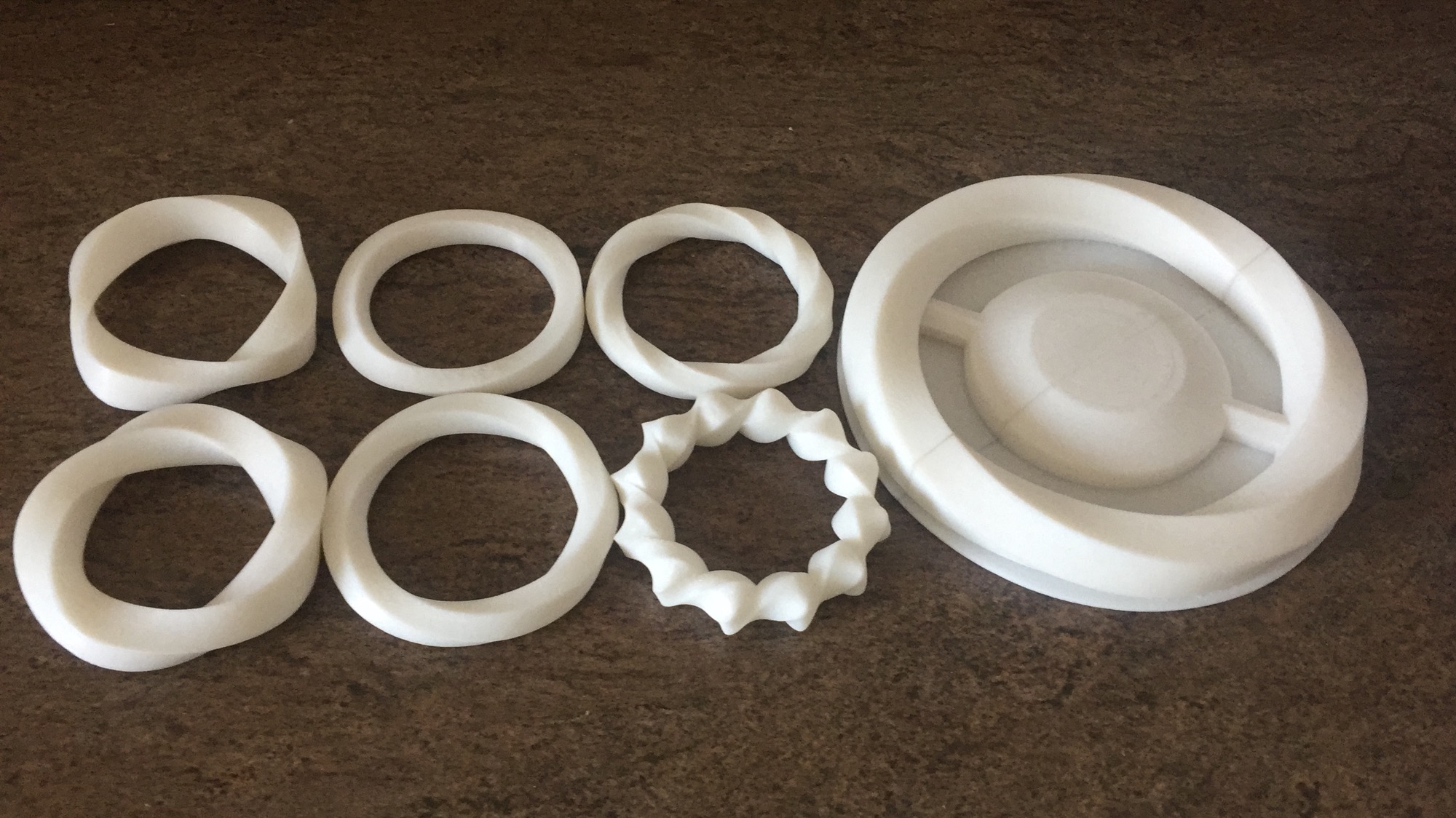
The site is adjacent to Rajpath, New Delhi. Rajpath is the widest city road in India, which acts as central vista for the so called Lutyens Delhi.
Rajpath extends from Rashtrapati Bhavan to India Gate, from government’s highest power tier to a public place. On the way, one can see the two secretariat buildings North & South and the existing Parliament House, Sansad Bhavan.
There is symmetry in the master plan of Lutyens Delhi design by Edwin Lutyens, which can be seen in the above image.
The Mughal gardens of Rashtrapati Bhavan, the two Secretariat buildings, water bodies and parks on the way and the hexagon of India gate form the symmetry.
Thus, symmetry of the central vista will be followed in plan and kind of circular form is chosen for the New Parliament House building.
The circular form for the Parliament House was chosen by Edwin Lutyens to depict that there will be no end to the British Empire.
Similar form has been taken up with a democratic approach.
1- To maintain harmony with the Architectural language of the area
2- To depict that there will be no end to the democracy in the country.
3- Democracy is chaotic but organised and hence multi-faceted with multiple parallel agendas, ideologies and diversity.
Aesthetics have been taken care by equating the steel members to the columns, color palette of the building and similar over all planning.

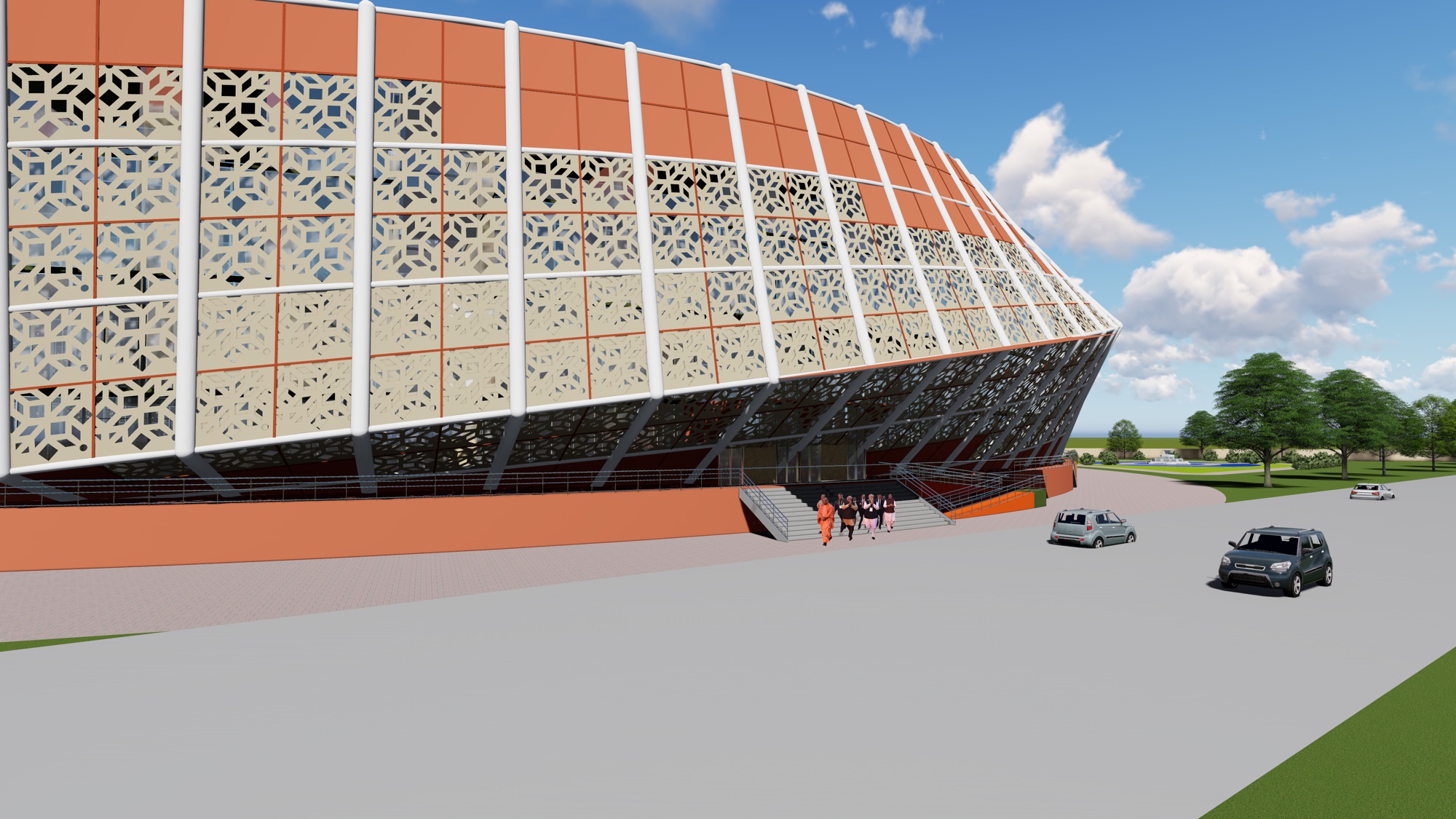
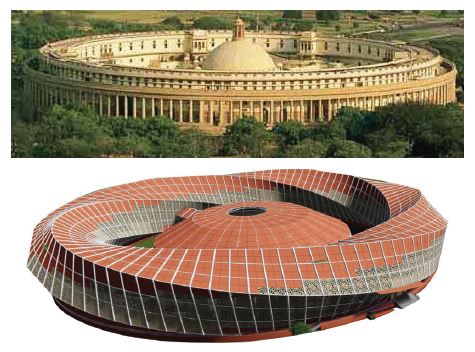
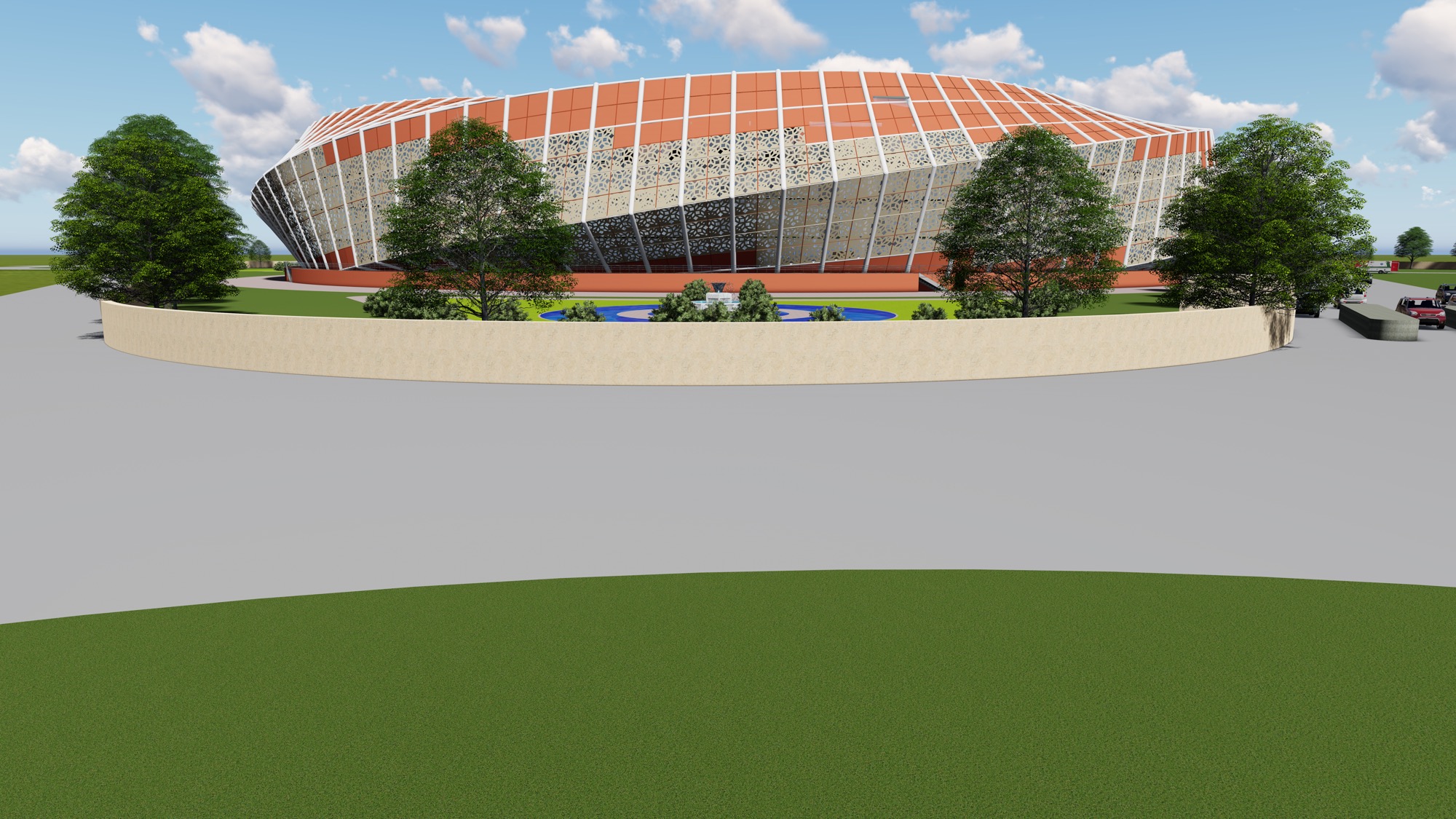
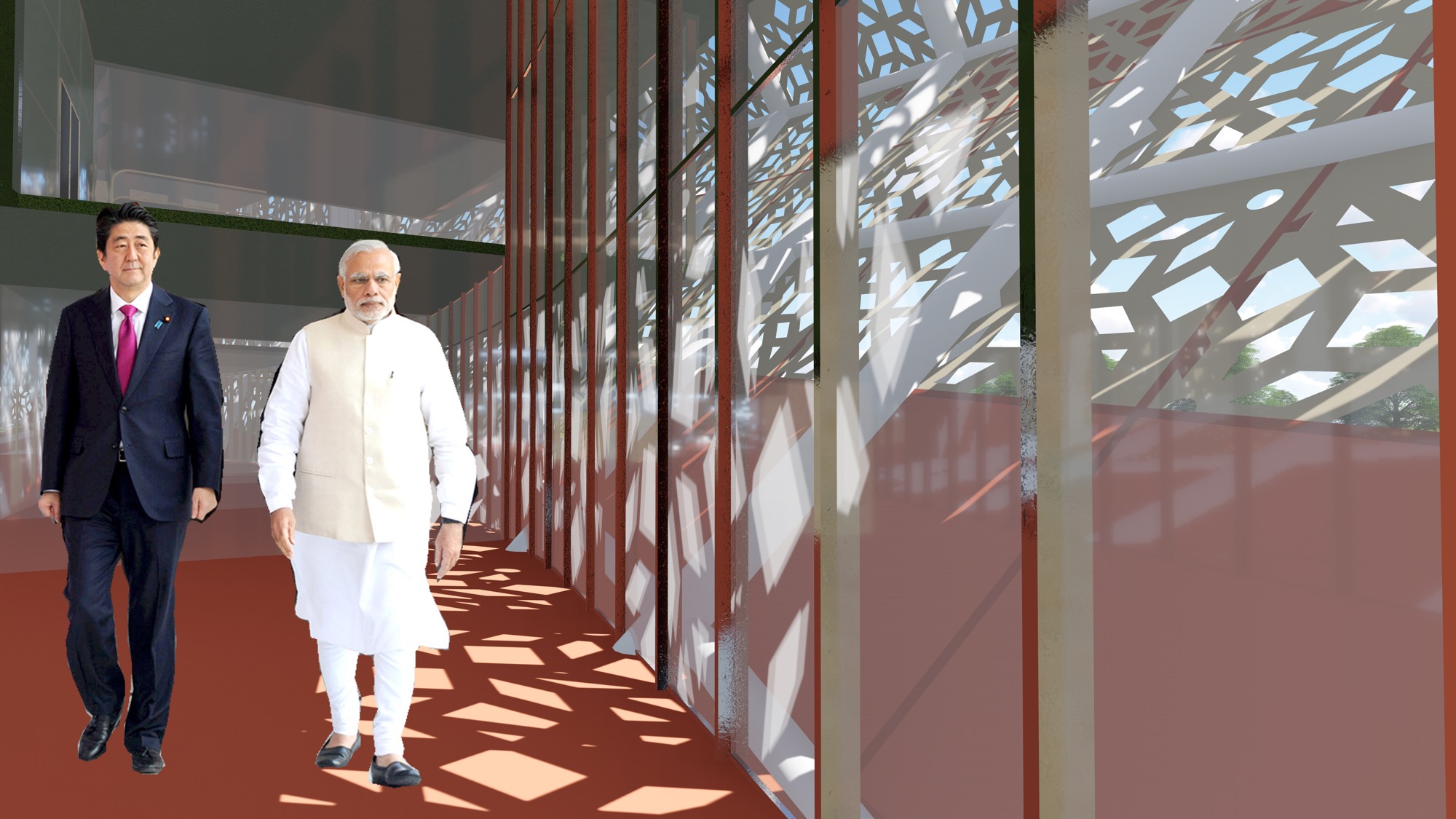
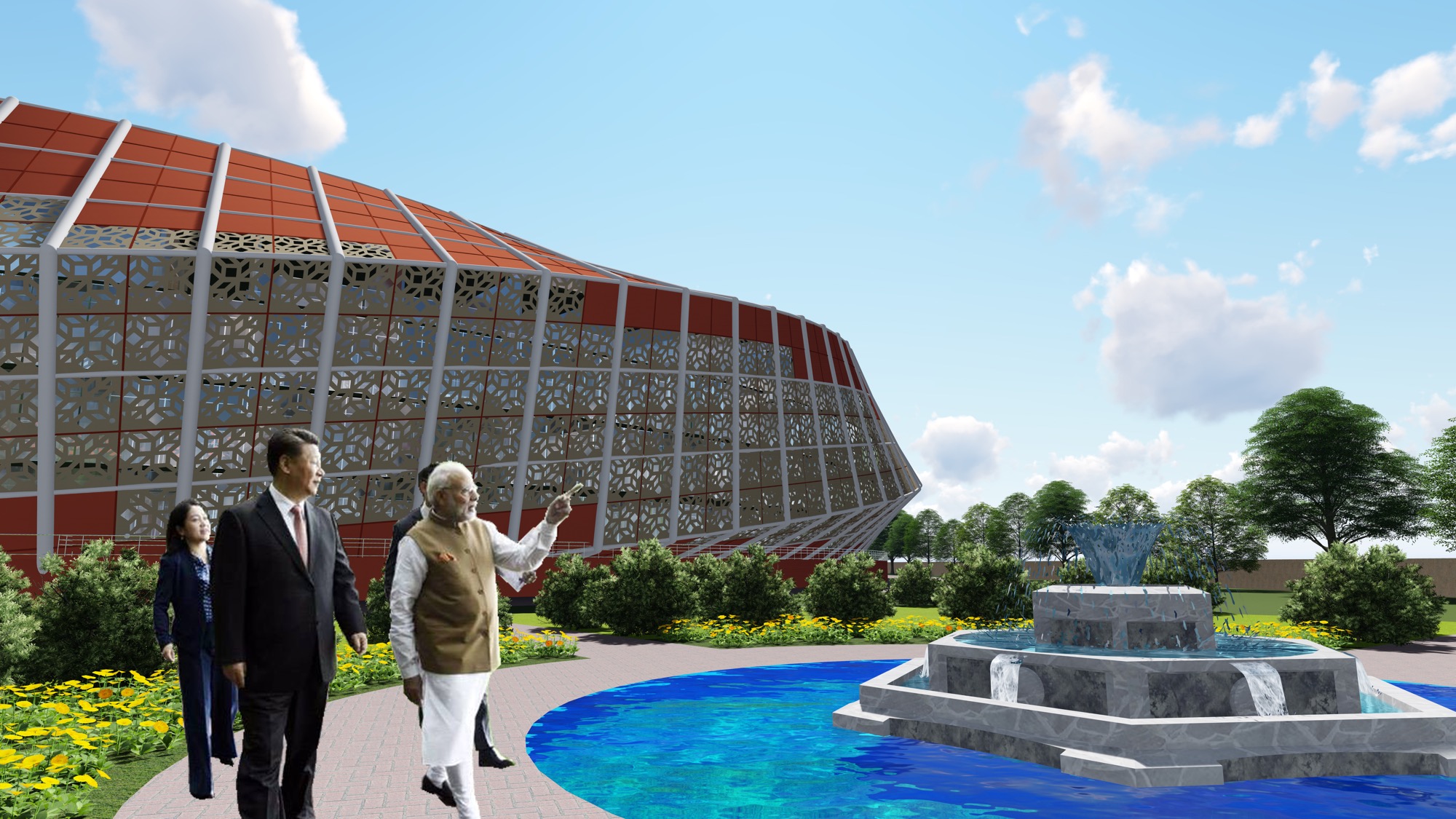
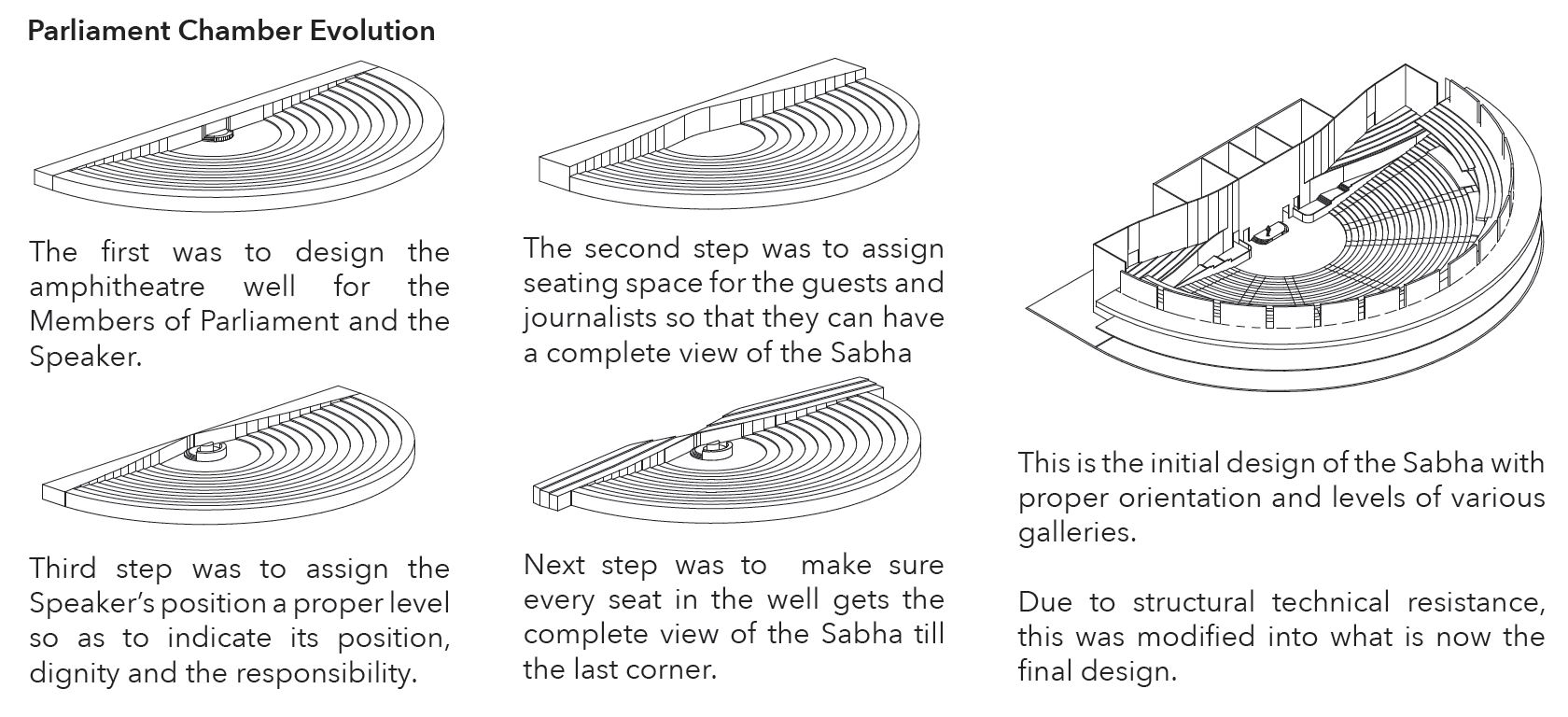




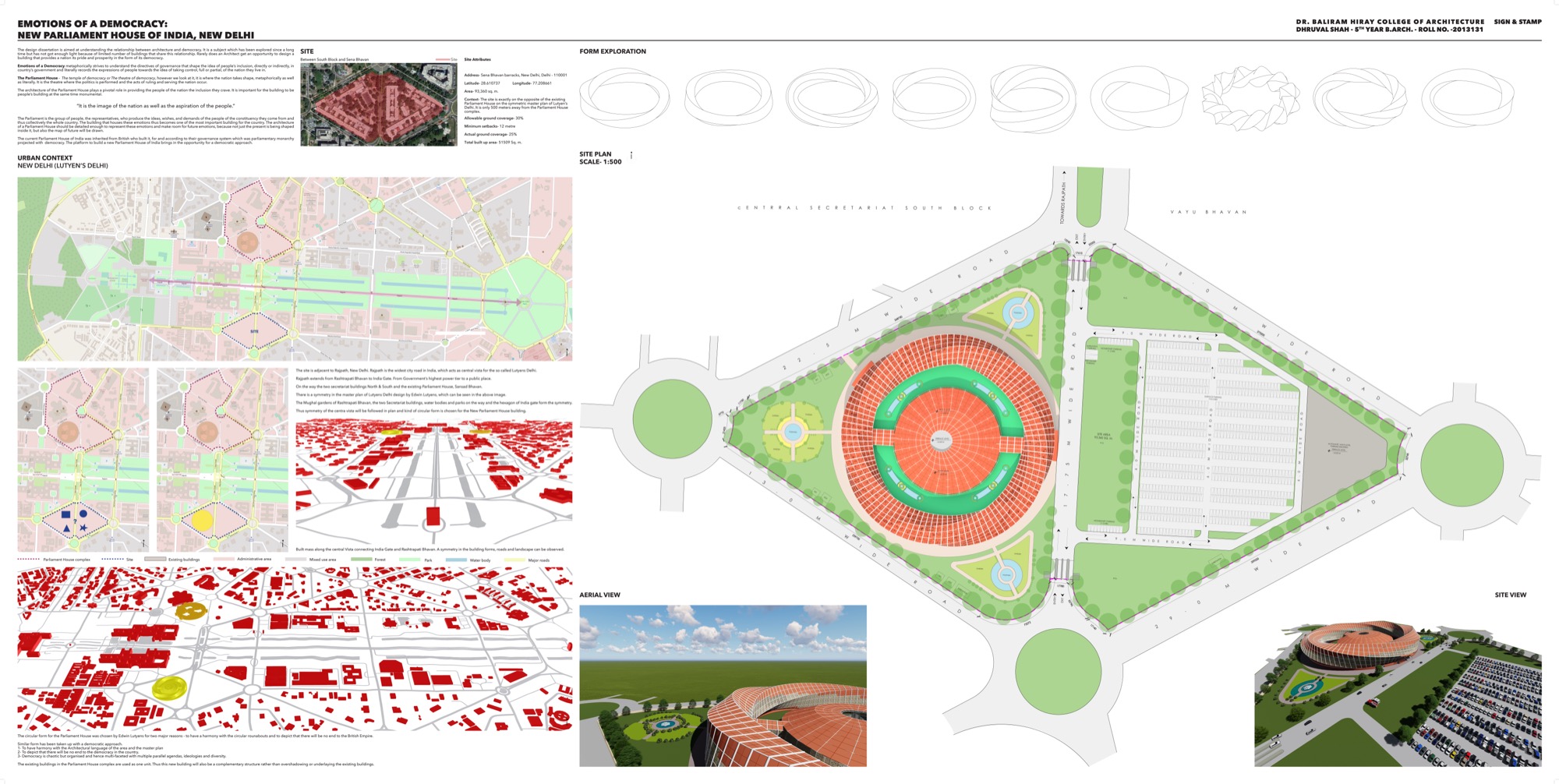
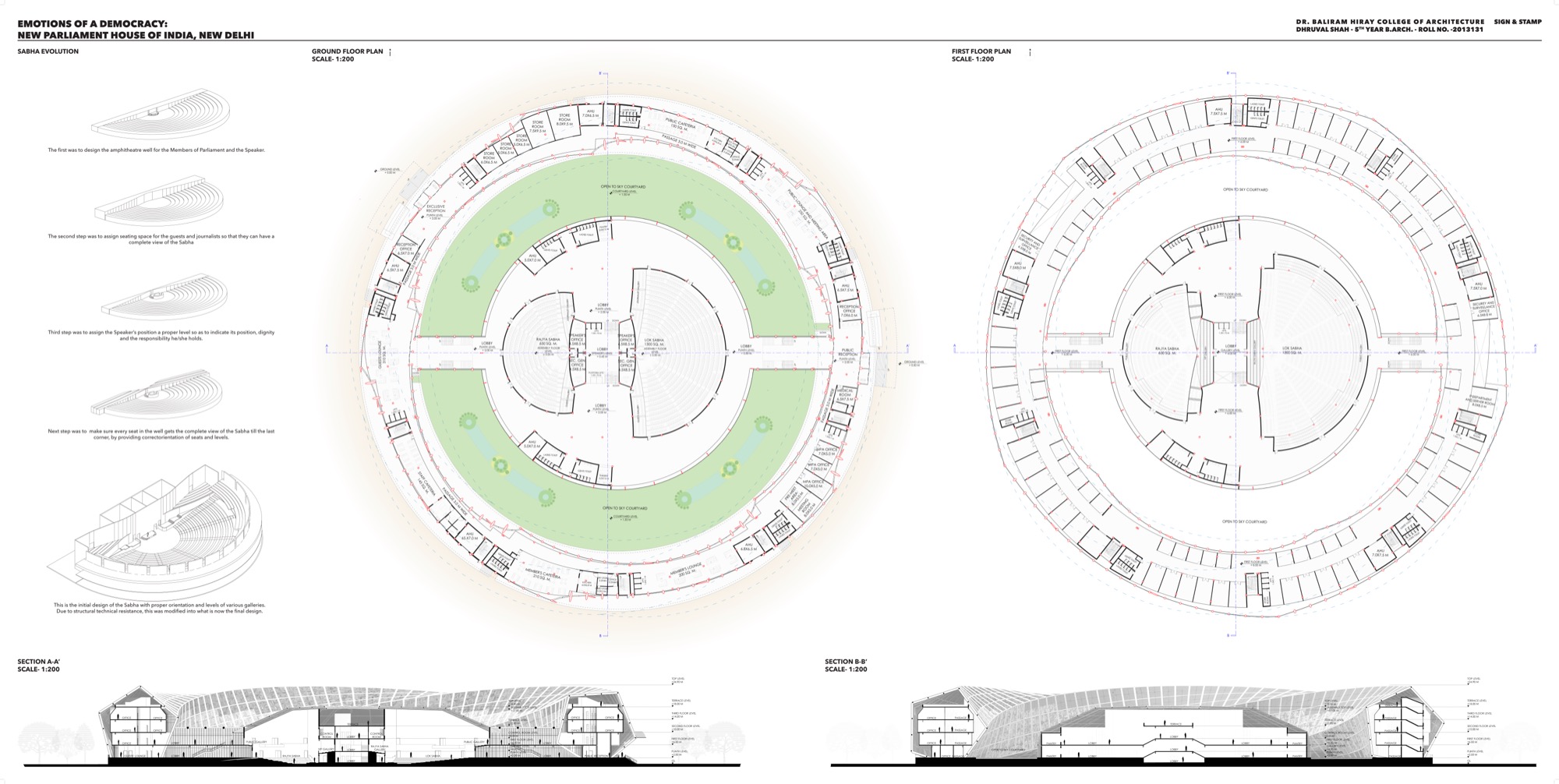

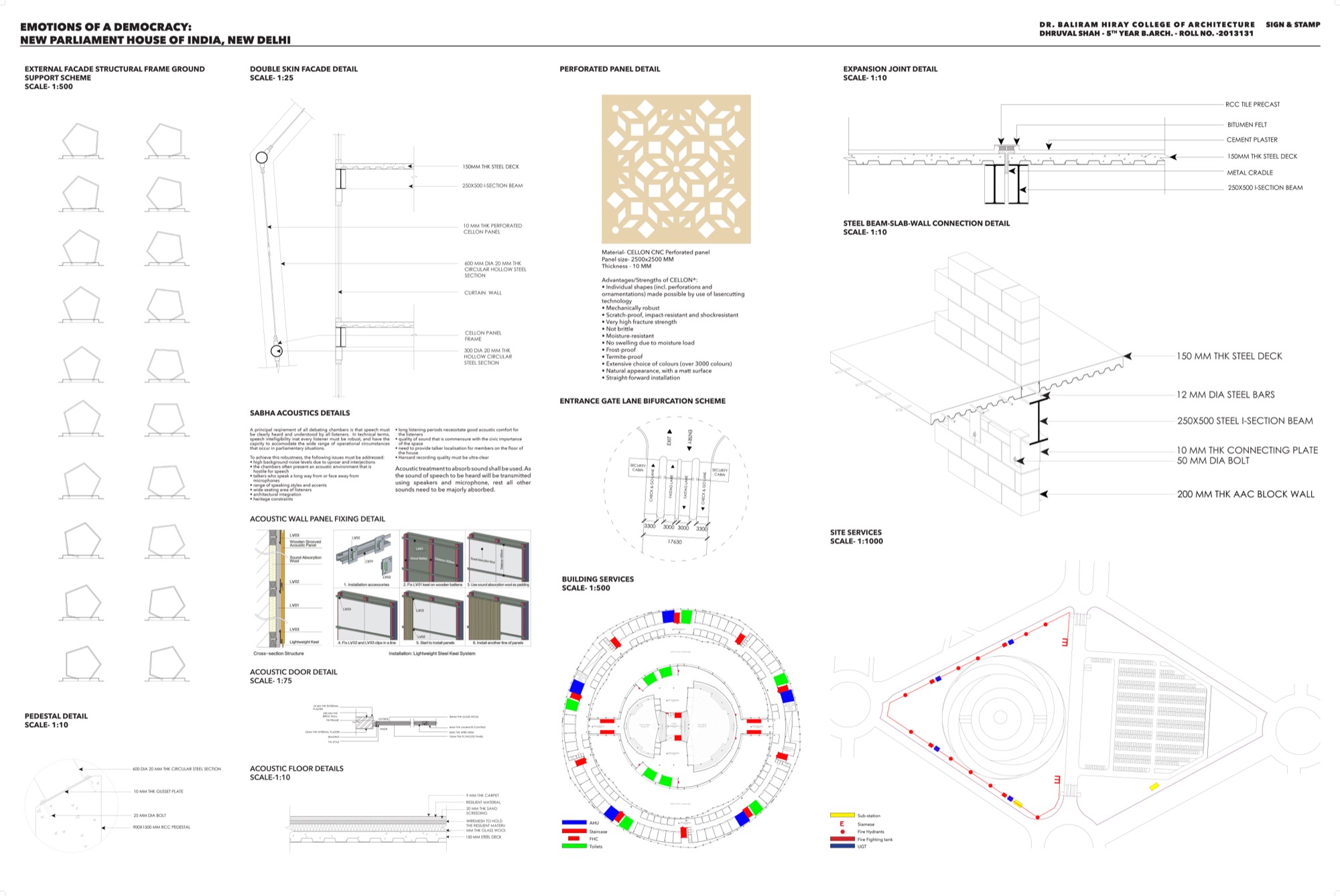
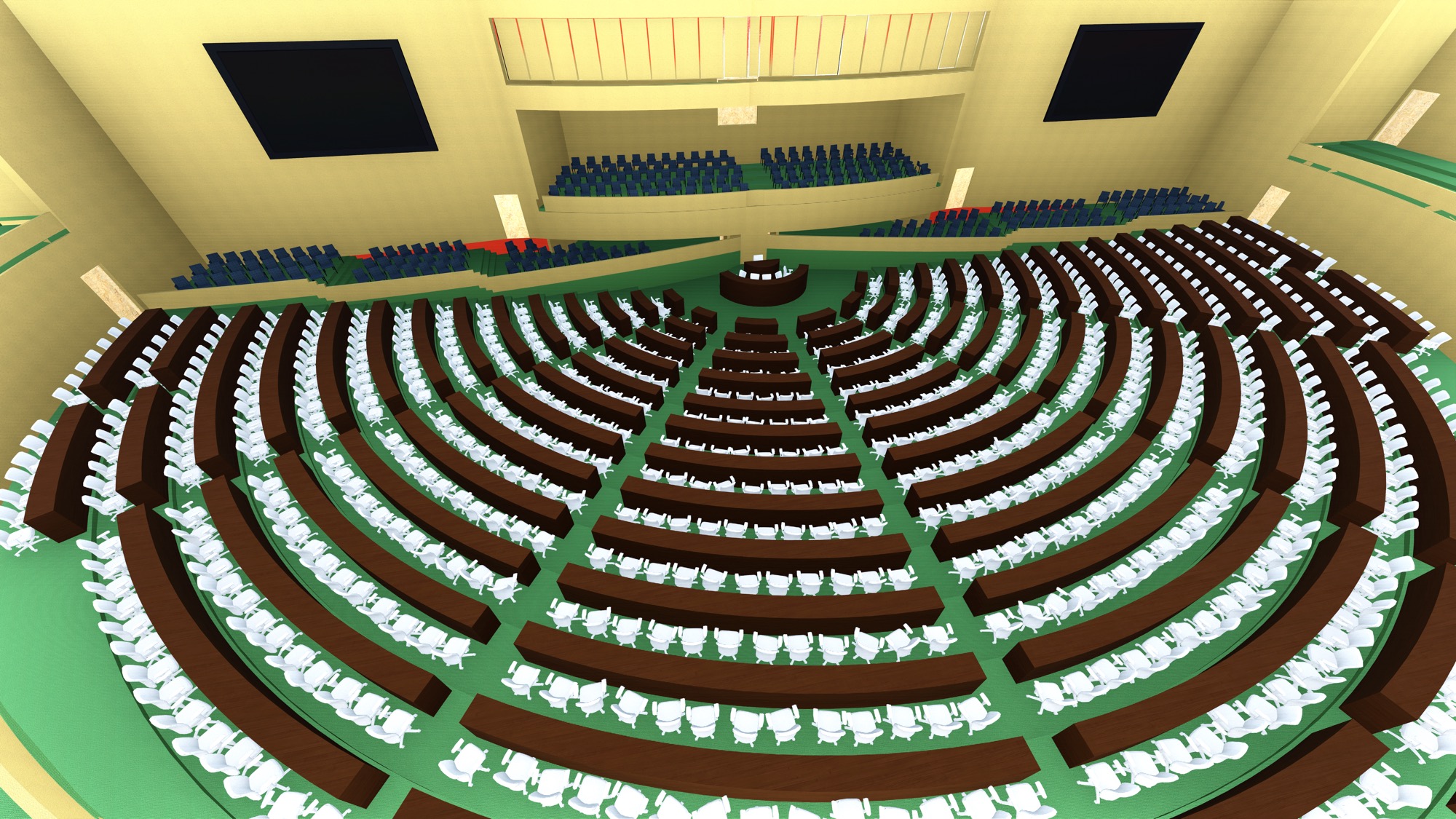
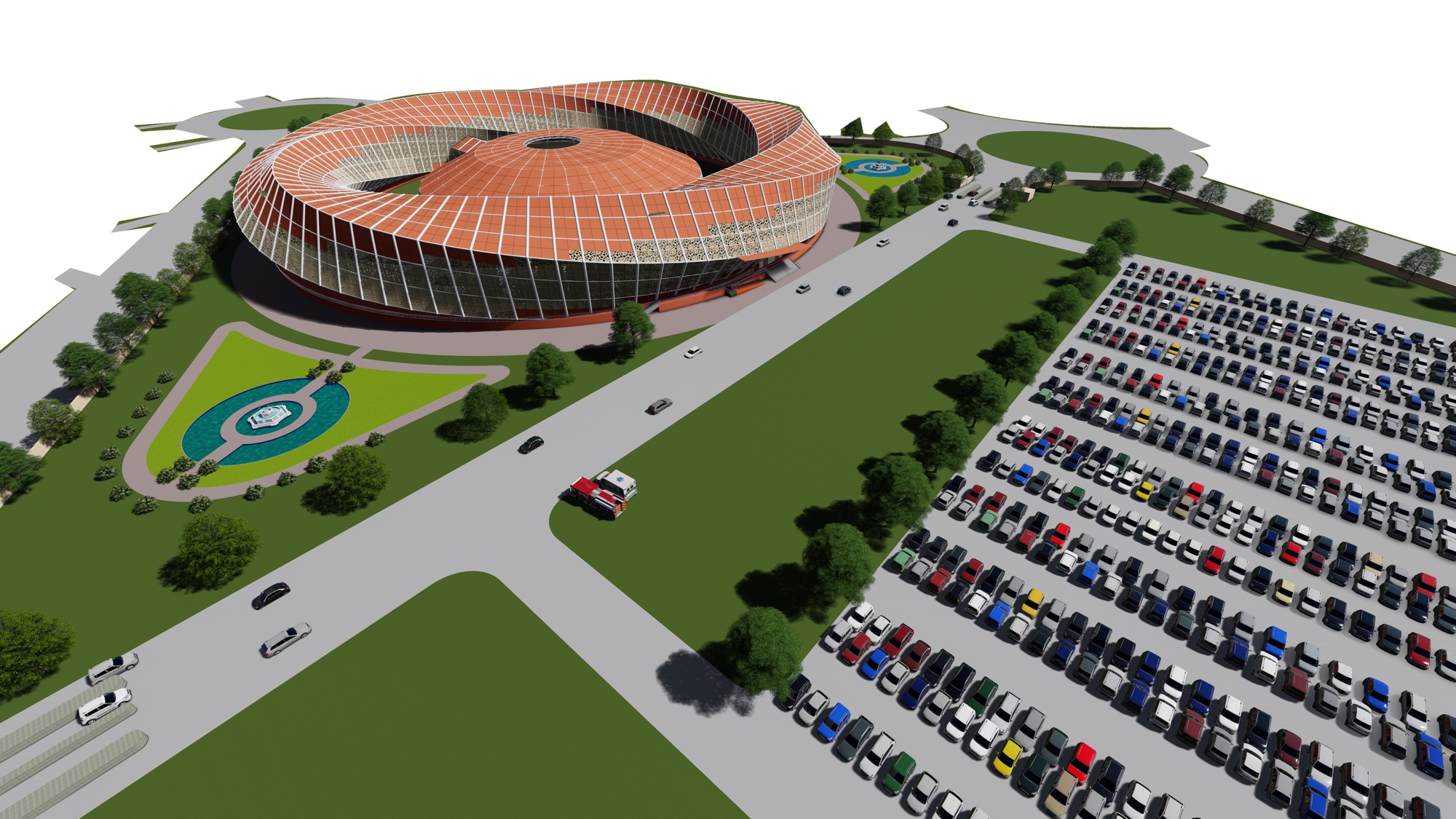







5 Responses
Hey! I’m really intrigued by your design.Those look great!! I’m working on something similar. Can we get in touch?? I’d like to understand the topic more..
Me too working on the same project can we get in touch! Watsapp me 8291819181
Hello. I came across your design and its really amazing. The topic itself is quite different. I would like to get in touch with you. If you are interested let me know.
This looks like a badly designed sports stadium. Not a national parliament building.
I appreciate this thought